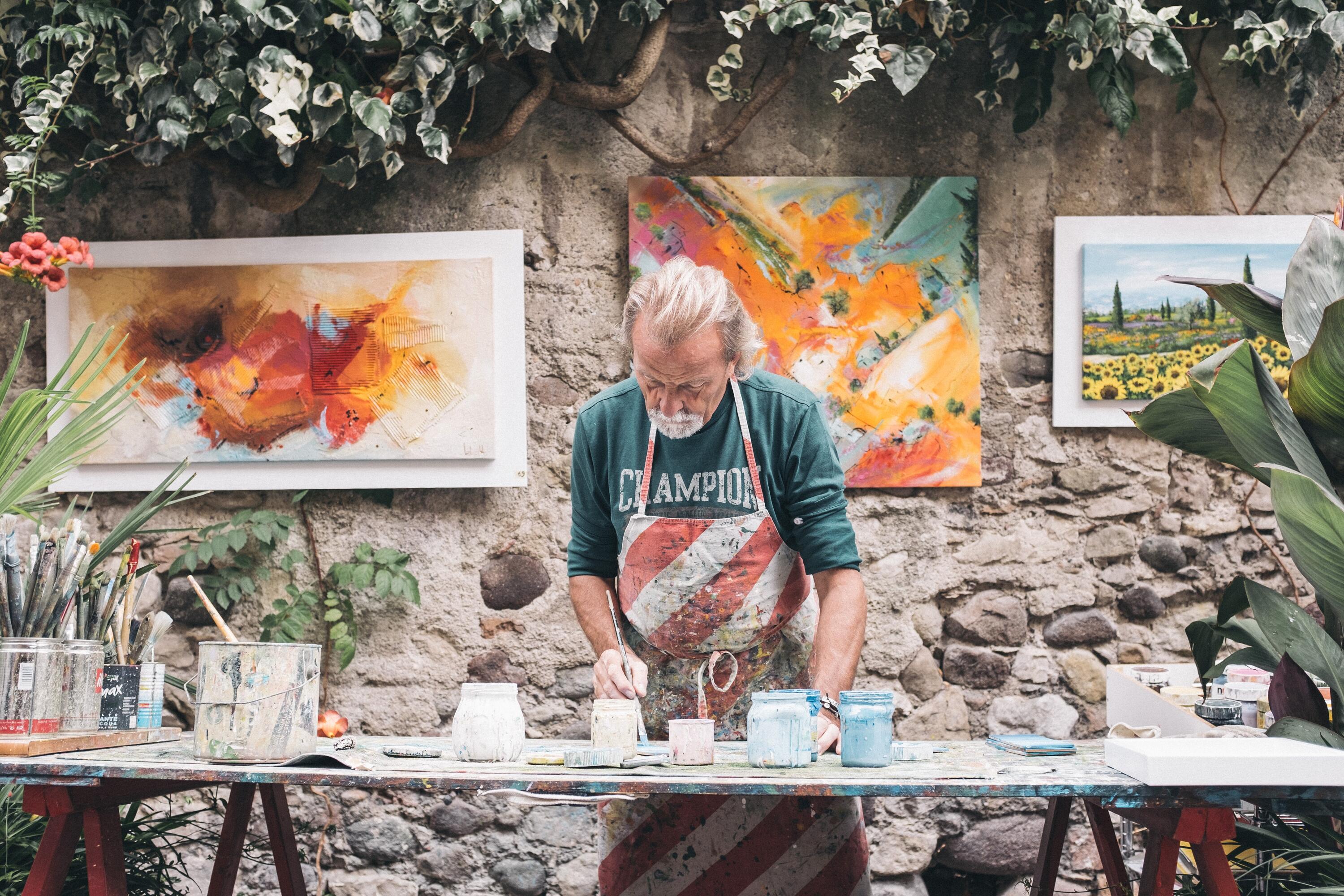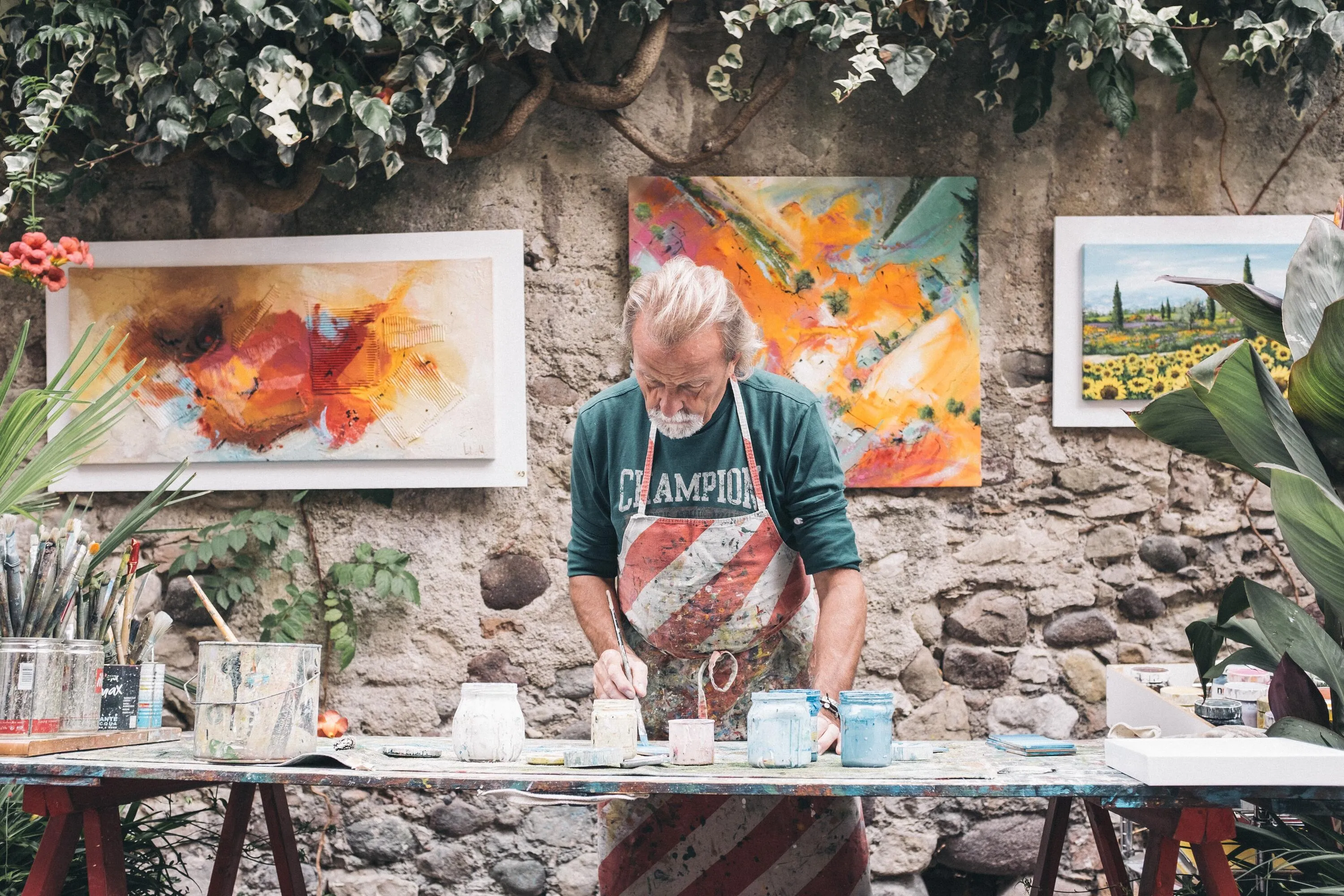9 Tips for Selling Your Art Online

It feels like there are hundreds of blog entries out there that offer quick tips on selling your art online. Believe me – there is nothing quick about getting up an online business and magically making money.
But it’s also not rocket science. Having a previous life as a gallerist, and after nearly a decade in the digital art world, I’ve spent some time picking the eyes out of those creative self-help guides, to create this definitive – real must-know – list.
I suppose the most important kernel of knowledge for selling your art online is persistence, and to keep it manageable. While we want to sell heaps and become a Rockerfeller, if you can’t service that client base and followers, then it’s going to be a short-lived flash of success.
But there are opportunities.
Last year, Art Basel placed online sales at 9% of the global art market – or an estimated new high of $US6 billion in 2018, up 11% year-on-year. Why shouldn’t that market share move beyond traditional dealers, especially when galleries are reporting that over half (52%) of their online sales were from new buyers?
And, as art fairs and traditional market streams have suffered during COVID-19, online art sales have come into their own. As Brian Parkes, CEO of Adelaide’s JamFactory told Guardian Australia, ‘The public have been making quarantine purchases. Our online sales have increased fivefold. We’re getting messages from people wanting to purchase something to support the artists.’
So this is what you have to do to capture your share:
1. People buy, but be patient
Landscape artist Emma Cownie boasts of selling 200 pieces online last year – both original artworks and prints. She says half of these were direct sales to collectors, which clearly indicates that there is a market out there, and people do feel confident buying online. But she warns: ‘You need to remember that it may take months or even years of following an artist’s work and career before a collector buys your work.’ Spoiler.
Come 1 January, I am not making new year’s resolutions. Rather, I am recording the number of followers I have on social channels and setting a target for growing it the coming year. You have to be strategic, yet realistic – and this is particularly so when these channels represent professional income streams.
This first tip is simple: be persistent and consistent.
2. Invest time: think 50% gallery commission

Cownie says she spends at least 50% of her day on marketing. And, like anything – shooting hoops or playing the piano – the more time you put into it the better the results. It is not only an investment in time; time is an investment in your career.
If you are serious about creating an online art business – yes, you are not just selling artworks out the backdoor of the studio – then you have to think of it as a business plan. What is your investment, and what is your projected goal? What will the brand look like, how will you market it, and how will it be seen by potential clients?
This is what the 50% commission that you give the gallerist in a traditional shopfront relationship is all about. As Cownie says, put 50% into marketing, client relations, and sales management like invoicing and freight.
If you are not prepared to give up some of your studio time to do this, then perhaps online sales are not the best route for you.
3. Compartmentalise or wing it

One of the biggest questions an artist or maker faces before setting up their online business is: what are they going to sell? While it sounds silly, it is a really important career strategy to consider.
Will you offer original works of art? Will you only select a suite of works for reproduction in edition? Will you offer prints, or go the line of arty merchandise?
Do you compartmentalise your practise to allow a door to remain open for gallery representation, while not compromising an income stream from the studio?
Think it through. Be true to your integrity and goals, and make the tough decisions. There is no room for winging it here.
4. A picture says a thousand words... well, no
As a client looking for a work of art to hang over my couch, there are a handful of things I will end up considering – artworks that work in the space. What often gets the sale of an artwork over the line is the story. I don’t mean you have to weave some elaborate journey to take the client on, rather it is about allowing them to connect with you.
After all, people like people.
They also want to have some confidence in their purchase, so share those career milestones and day-to-day career gongs. You want to bring them along on the journey of your success – and indeed allow them to play their own role in it.
Whether for your own website, Instagram or a dedicated site like Etsy or Bluethumb, write descriptions for each artwork you upload, as well as an artist statement and bio.
5. Be aware of SEO
SEO (Search Engine Optimisation) is really just about choosing accurate, functional and slightly sexy keywords so that search engines like Google and Safari capture your posts.
I once heard it described as follows: ‘A website that is well optimised for search engines “speaks the same language” as its potential visitor base.’ Put simply, it is about connecting searchers – aka "I’m looking for a landscape painting” or "an Indigenous artist” – with what you have to sell.
In the same way you use SEO on your website, such terms also become hashtags on your Instagram posts or pins on Pinterest. Don’t get lazy and forget to use them.
6. Be more social - and that's not more time at the pub
What you are essentially faced with when setting up an online art business is creating a brand – and that brand is you. Get savvy and listen to a few podcasts on arts marketing.
By this stage in our digital maturity, we are collectively familiar with Facebook, Instagram (Instagram Shopping), Twitter, YouTube and Pinterest. Today, an online art business cannot exist without them.
While some proponents say you should do them all, rather I suggest committing to two streams that are the best fit for you. Ensure also that they have the capacity for e-Commerce or make it easy to point to your website where you can facilitate sales. If you don’t, all that hard work is for nothing. It won’t be you main channel for selling, but no one wants to miss an opportunity.
In the same vein, use those hashtags – otherwise you are not capturing new followers.
And if someone comments or shares your work, then let them know you noticed! This exercise is about building supporters, not preening feathers.
7. Think beyond social media - think "Destination Art"

Like any investment or skills portfolio, you need to diversify. As the founding director of Visual Art Trader, Chris Grant-Peterkin says, ‘Don't confuse networking platforms with sales platforms’.
Whereas individual artist's websites and social media platforms are essential networking tools, designed to help manage existing clients, you will also need to tap into online sales platforms aka Etsy, Bluethumb, Amazon Art or Saatchi Online.
These platforms operate a little like art fairs – a one-stop shop of many art vendors. But they are destination sites and allow visibility for a new client pool.
ArtsHub Journalist Sabine Bix walks you through some of those portals in the video, Artists Essentials Toolkit #3: Making money from your art online.
She reminds us: ‘Making money from your art online requires a two-pronged approach – putting it online where it can be found, and promoting it well to establish an audience. For most artists, making money with their art online is a slower and more of a supplemental income rather than a single stream.’
8. Don't freeze out the traditional offline art market
There is, of course, also the traditional offline art market – don’t turn your back on it. While gallery representation is tough, most galleries themselves sell online today, which has opened their capacity to work with more artists from a variety of genre and stylist positions
Chris Grant-Peterkin notes: ‘Never undercut established gallery market prices online and don't use the internet to offload inferior work. Online activities are not an alternative sales tool, but an additional sales tool to complement and support enterprises offline’
It is sound advice!
One of the things that has persistently held back online buyers is the ability to inspect the work. If you don’t have gallery representation, then think of complementing your online activities with a studio open day.
9. Packing and shipping art

As they say in the restaurant biz, 'paddock to plate' – in the online art biz, you need to think studio to client’s wall.
Before you even list a single artwork for sale – regardless of what platform – you need to consider the most basic things like the costs of packing materials, the cost of postage/shipping, shipping insurance, and the presentation of the object if you are selling more production and art merchandise from the studio.
There are lots of blog sites that offer tips on how to wrap and ship artworks – check them out. My greatest advice here is a business one – cost everything out and transfer that to the client.
This article was originally published by our friends at Artshub Australia.
Written by Gina Fairley.


